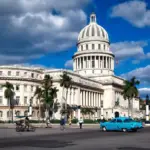
The best time to visit Antelope Canyon is during the months of late spring to early fall, typically from May to September. During this period, the weather is warm and the sunlight penetrates the narrow slot canyons, creating stunning light beams and vibrant colors on the smooth, sculpted sandstone walls. The peak season is from June to August, when the sunlight is most intense and produces the famous “shaft of light” effect. However, if you prefer fewer crowds and still want to experience beautiful lighting, the shoulder months of May and September are excellent choices. It’s essential to consider that the canyon is subject to flash floods, so it’s crucial to check weather conditions and be aware of any potential risks before planning your visit.
the basics of antelope canyon

Nestled within the heart of the Navajo Nation in Arizona, Antelope Canyon stands as a geological masterpiece, etched by centuries of wind and water erosion. Its smooth, undulating sandstone walls create a visual symphony of color and light, making it a photographer’s dream and a must-visit destination for nature enthusiasts.
The canyon is divided into two sections: Upper Antelope Canyon and Lower Antelope Canyon. Both sections offer unique perspectives and captivating formations, but when is the best time to visit antelope canyon may vary depending on your preferences and interests.
Understanding the Seasons: Part of the Antelope Canyon Magic
Antelope Canyon Throughout the Year
To grasp the essence of the best time to visit Antelope Canyon, one must first understand the canyon’s seasonal variations. Each season brings its own distinct charm, transforming the canyon’s appearance and ambiance.
Spring (March to May):
Mild temperatures and blooming wildflowers.
Soft sunlight penetrates the canyon, creating warm hues.
Ideal for photographers seeking a balance of light and shadow.
Summer (June to August):
Peak tourist season with longer daylight hours.
Vibrant sunlight beams into the canyon, illuminating intricate formations.
Higher temperatures, necessitating hydration and sun protection.
Fall (September to November):
Cooler temperatures and thinner crowds compared to summer.
Golden sunlight casts a warm glow, enhancing the canyon’s beauty.
Perfect for those seeking a quieter experience with favorable weather.
Winter (December to February):
Crisp air and potential for sunlight shafts, creating unique photo opportunities.
Fewer visitors, providing a more intimate experience.
Be prepared for cooler temperatures and occasional closures due to weather.
Lighting Conditions: A Photographer’s Dilemma

The interplay of light within Antelope Canyon is a significant factor in determining the best time to visit. The sunlight filtering through the narrow openings at the top of the canyon produces mesmerizing beams and shafts, creating a breathtaking display of colors and contrasts.
Upper Antelope Canyon:
Best visited during midday when the sunlight directly shines into the canyon.
Famous for the “beams of light” phenomenon around noon in late spring and early summer.
Ideal for capturing the iconic light beams with a higher chance of optimal conditions.
Lower Antelope Canyon:

Offers unique lighting conditions throughout the day.
Morning hours provide softer, diffused light, enhancing the canyon’s intricate details.
Afternoon sunlight produces vibrant colors, especially in the deeper sections.
Understanding the lighting dynamics and the specific features of each canyon section is crucial for photographers and visitors seeking an immersive experience.
Antelope Canyons’ allure is not confined to a specific time; it evolves with the changing seasons and lighting conditions. In the upcoming parts of this guide, we will delve deeper into the factors influencing your Antelope Canyon experience, including crowd levels, tour options, and essential tips for making the most of your visit. Join us on this journey to uncover the secrets of timing your Antelope Canyon adventure perfectly.
Crowd Levels and Timing: Navigating the Antelope Canyon Experience
Anticipating the Crowds:

The popularity of Antelope Canyon has surged in recent years, turning this natural wonder into a bustling tourist destination. Managing crowd levels is a crucial aspect of planning your visit, ensuring a serene encounter with the canyon’s beauty.
Peak Season Challenges:

Summer months, especially June to August, witness a peak in visitor numbers.
Long lines and crowded tours can diminish the tranquility of the experience.
Plan well in advance and consider opting for early morning or late afternoon tours to avoid the busiest times.
Shoulder Seasons for Solitude:
Spring and fall offer a balance between favorable weather and fewer visitors.
Consider visiting during weekdays to escape the weekend rush.
Winter, despite cooler temperatures, provides a peaceful atmosphere with significantly reduced crowds.
Tour Options and Reservation Tips:
Selecting the right tour option adds another layer to your Antelope Canyon adventure. Both Upper and Lower Antelope Canyons require guided tours, and understanding the nuances of each can enhance your overall experience.
Upper Antelope Canyon Tours:
Popular and often booked to capacity, especially during peak season.
Book your tour well in advance to secure your preferred time slot.
Photography tours are available for enthusiasts seeking extended time and optimal lighting conditions.
Lower Antelope Canyon Tours:
Generally less crowded than Upper Antelope Canyon.
Tours may require climbing ladders and navigating narrow passages.
Advanced booking is advisable, but spontaneous visits may be accommodated during the off-peak season.
Timing is Key:
Choosing the right time of day for your Antelope Canyon excursion can significantly impact your overall enjoyment.
Early Mornings:
Ideal for a more intimate experience, especially during the busy season.
Soft morning light enhances the canyon’s intricate details.
Capture the serene beauty before the crowds arrive.
Late Afternoons:
Enjoy the warm, golden hues as the sun begins to set.
Reduced crowds compared to midday tours.
Photographers can capture the changing colors and shadows.
Midday Considerations:
Best for witnessing the famous light beams in Upper Antelope Canyon.
Expect larger crowds but a unique and vibrant display of light.
Plan accordingly to make the most of the midday experience.
Navigating the ebb and flow of crowds, choosing the right tour, and timing your visit appropriately are essential elements in crafting a memorable Antelope Canyon adventure. In the next part of our guide, we will explore additional tips and considerations, ensuring you embark on your journey well-prepared for the magic that awaits in this captivating geological wonder.
Tips and Considerations for an Unforgettable Antelope Canyon Adventure
Harnessing the Magic: Additional Insights for Your Visit
As you plan your journey to Antelope Canyon, there are several nuanced considerations that can elevate your experience. From photography tips to weather precautions, here’s an in-depth guide to ensure you make the most of your visit.
1. Photography Protocols:
Upper Antelope Canyon:
To witness the iconic light beams, plan your visit around midday when the sun is directly overhead.Consider booking a specialized photography tour for extended time and expert guidance. Bring a sturdy tripod for stability during longer exposure times. Ensure your camera equipment is securely packed for the rugged terrain.
Lower Antelope Canyon:
Lower Antelope Canyon offers varied lighting conditions throughout the day. Experiment with different settings to capture its unique beauty.Be prepared to climb ladders during the tour, so pack your camera gear securely in a backpack.
2. Weather Precautions:

Summer:
Arizona summers can be scorching, so stay hydrated. Carry a refillable water bottle and drink plenty of fluids, especially during midday tours. Use sunscreen, wear a hat, and bring sunglasses to shield yourself from the intense sunlight.
Winter:
While winter brings fewer crowds, temperatures can drop. Dress in layers to stay warm, and consider bringing gloves and a hat.Winter weather can be unpredictable. Check for any closures or tour cancellations due to adverse conditions.
3. Clothing and Footwear:
Wear sturdy, closed-toe shoes suitable for walking on sandy terrain and climbing ladders. Opt for comfortable, layered clothing to accommodate temperature changes within the canyon.
4. Time Allocation:
Antelope Canyon tours typically last around 1-1.5 hours. Factor in additional time for check-in, transportation, and potential wait times. Consider exploring nearby attractions such as Horseshoe Bend to make the most of your visit to the region.
5. Guided Tours vs. Self-Guided Exploration:
Both Upper and Lower Antelope Canyons require guided tours. Guides provide valuable insights into the canyon’s history and geology. While guided tours are mandatory, you can explore the surrounding areas on your own. Check for any restrictions and follow safety guidelines.
6. Respect and Conservation:
Abide by all rules and guidelines provided by tour operators to ensure the preservation of the canyon’s delicate environment. Respect the natural beauty of Antelope Canyon by leaving no trace. Avoid touching the canyon walls to preserve their unique formations.
7. Off-Peak Serenity:
If your schedule allows, visit Antelope Canyon on weekdays to avoid weekend crowds. Embrace the quieter atmosphere of winter, but be mindful of potential weather-related challenges.
8. Booking and Reservations:
Secure your spot by booking your tour well in advance, especially during peak seasons.
Check with tour operators for any flexibility in case you need to reschedule due to unforeseen circumstances.
9. Photography Etiquette:
Be Considerate: Respect fellow visitors and their photography pursuits. Be mindful of others’ space and time during the tour.
10. Post-Processing Tips:
Post-processing software can enhance the vibrant colors captured within the canyon. Experiment with adjustments to bring out the best in your photographs.
By considering these tips and preparations, you’ll not only optimize your visit to Antelope Canyon but also contribute to the conservation efforts that ensure future generations can marvel at this geological wonder. In the final part of our guide, we’ll summarize key takeaways and offer a glimpse into the enduring allure of Antelope Canyon.
Unveiling the Timeless Allure of Antelope Canyon: A Conclusion and FAQs
Antelope Canyon: A Timeless Wonder

As we conclude our journey through the best time to visit Antelope Canyon and the myriad considerations that accompany this adventure, it’s essential to reflect on the timeless allure that has captivated visitors for generations. Antelope Canyon’s beauty transcends the boundaries of time, offering a glimpse into the geological wonders shaped by nature’s patient artistry.
The Enduring Beauty: Antelope Canyon’s undulating walls, sculpted by wind and water over centuries, tell a silent tale of resilience and transformation. The interplay of light and shadow, the vibrant hues that dance along the canyon’s curves, create a canvas that seems to transcend reality. Whether bathed in the soft glow of morning light or adorned with the fiery hues of a desert sunset, the canyon’s beauty is an ever-changing masterpiece.
Preservation and Conservation: As we marvel at the enchanting beauty of Antelope Canyon, it is crucial to acknowledge the delicate balance that exists between visitor enjoyment and the preservation of this natural wonder. Guided by responsible tourism practices and a commitment to conservation, visitors play a pivotal role in ensuring that Antelope Canyon’s magic endures for generations to come. By following guidelines, leaving no trace, and respecting the canyon’s fragility, we contribute to its ongoing preservation.
The Best Time, Your Time: While we’ve explored the nuances of the best times to visit Antelope Canyon, it’s essential to remember that the “best time” is a subjective concept. Each season and moment within the canyon offers a unique and mesmerizing experience. Whether you choose the vibrant colors of spring, the warmth of summer, the golden hues of fall, or the quiet serenity of winter, Antelope Canyon welcomes you with open arms.
FAQs: Deciding when is the best time to visit antelope canyon?
Can I Visit Antelope Canyon Without a Tour?
No, both Upper and Lower Antelope Canyons require guided tours. The tours are designed to ensure visitor safety and the preservation of the canyon’s delicate environment.
How Far in Advance Should I Book my Antelope Canyon Tour?
It is advisable to book your Antelope Canyon tour as far in advance as possible, especially if you plan to visit during peak seasons. Some tours, particularly photography tours and popular time slots, may fill up quickly.
What is the Difference Between Upper and Lower Antelope Canyon?
While both canyons boast stunning formations, Upper Antelope Canyon is known for its iconic light beams, especially around midday. Lower Antelope Canyon offers diverse lighting conditions throughout the day and involves climbing ladders, providing a different adventure.
How Long Does a Typical Antelope Canyon Tour Last?
Antelope Canyon tours typically last around 1 to 1.5 hours. This duration includes the guided exploration of the canyon and transportation to and from the entrance.
Are There Any Restrictions or Guidelines I Should Be Aware of?
Yes, it’s essential to follow guidelines provided by tour operators to ensure the preservation of the canyon. Avoid touching the canyon walls, and be respectful of the environment. Additionally, check for any specific restrictions, such as photography regulations, set by the tour operator.
What Should I Pack for my Antelope Canyon Visit?
Consider packing closed-toe shoes suitable for walking on sandy terrain, comfortable layered clothing, a hat, sunglasses, sunscreen, and a refillable water bottle. If you’re a photographer, bring a sturdy tripod and secure packing for your camera equipment.
Can I Visit Antelope Canyon in Winter?
Yes, you can visit Antelope Canyon in winter. While temperatures may be cooler, the canyon’s tranquility during this season offers a unique and serene experience. However, be mindful of potential weather-related challenges, and check for any closures or tour cancellations.
What Time of Day is Best for Photography in Antelope Canyon?
The best time for photography depends on whether you’re visiting Upper or Lower Antelope Canyon. For Upper Antelope Canyon and its famous light beams, midday is optimal. For Lower Antelope Canyon, morning and late afternoon offer varied lighting conditions and opportunities for stunning photographs.
Are There Nearby Attractions to Explore After Visiting Antelope Canyon?
Yes, there are several nearby attractions worth exploring, such as Horseshoe Bend, which offers breathtaking views of the Colorado River. Consider extending your visit to discover more of the natural wonders in the region.
How Can I Contribute to the Conservation of Antelope Canyon?
Contribute to the conservation of Antelope Canyon by following all guidelines provided by tour operators. Avoid touching the canyon walls, practice Leave No Trace principles, and be mindful of the fragility of the environment. Your responsible tourism practices help preserve this geological wonder for future generations.
Conclusion: Embarking on Your Antelope Canyon Odyssey

As you prepare to embark on your Antelope Canyon adventure, armed with insights into the best time to visit, tour options, and essential considerations, remember that the magic of this geological wonder transcends any specific moment. Antelope Canyon invites you to be present, to marvel at the ever-changing canvas of colors and shapes, and to contribute to its preservation.
Whether you’re a photographer seeking the perfect shot or a nature enthusiast savoring the quiet beauty of the canyon, Antelope Canyon offers an immersive experience that transcends the confines of time. As you venture into the heart of this natural masterpiece, may the whispers of the wind and the dance of sunlight guide you through an unforgettable journey in the embrace of Antelope Canyon’s timeless allure.






